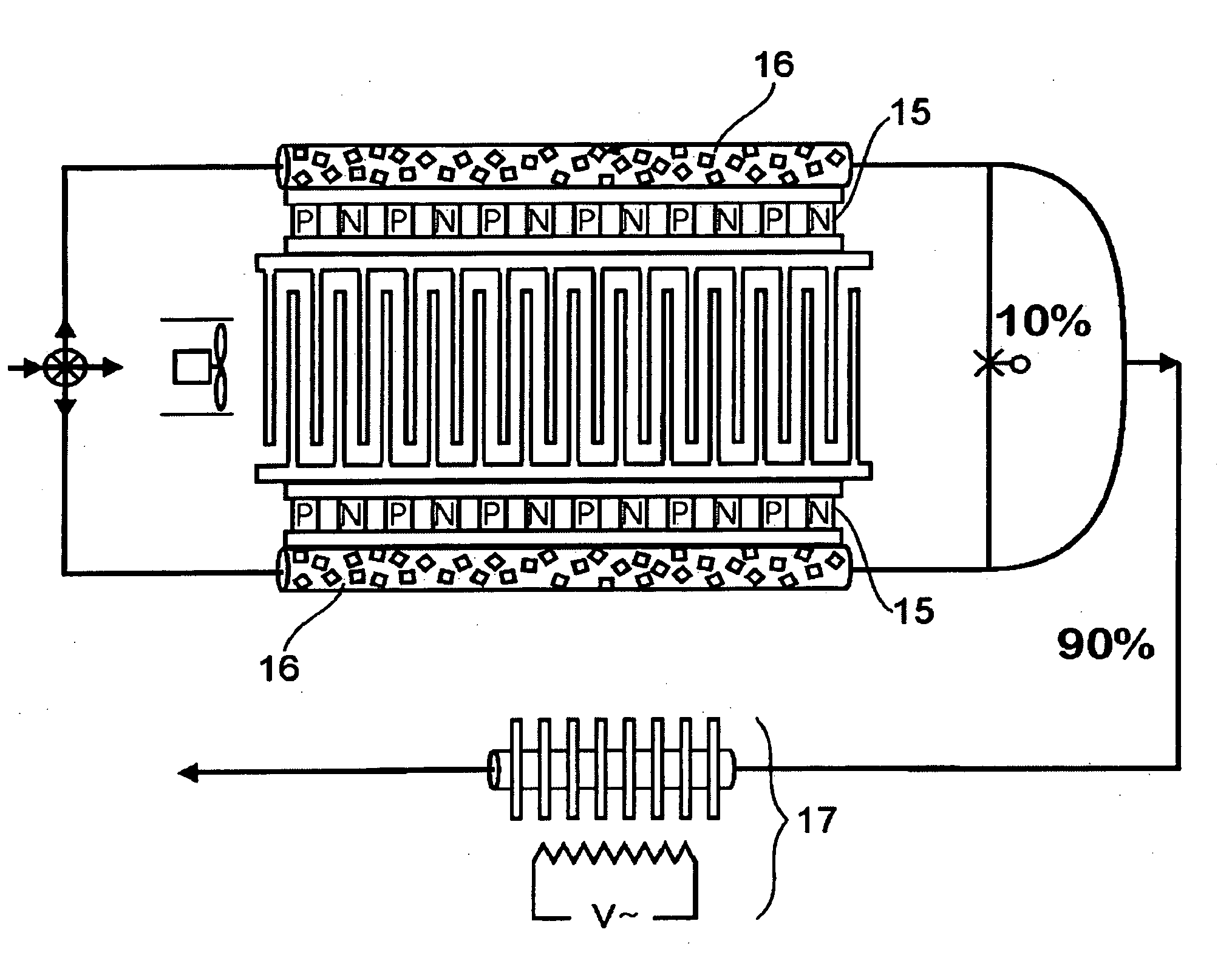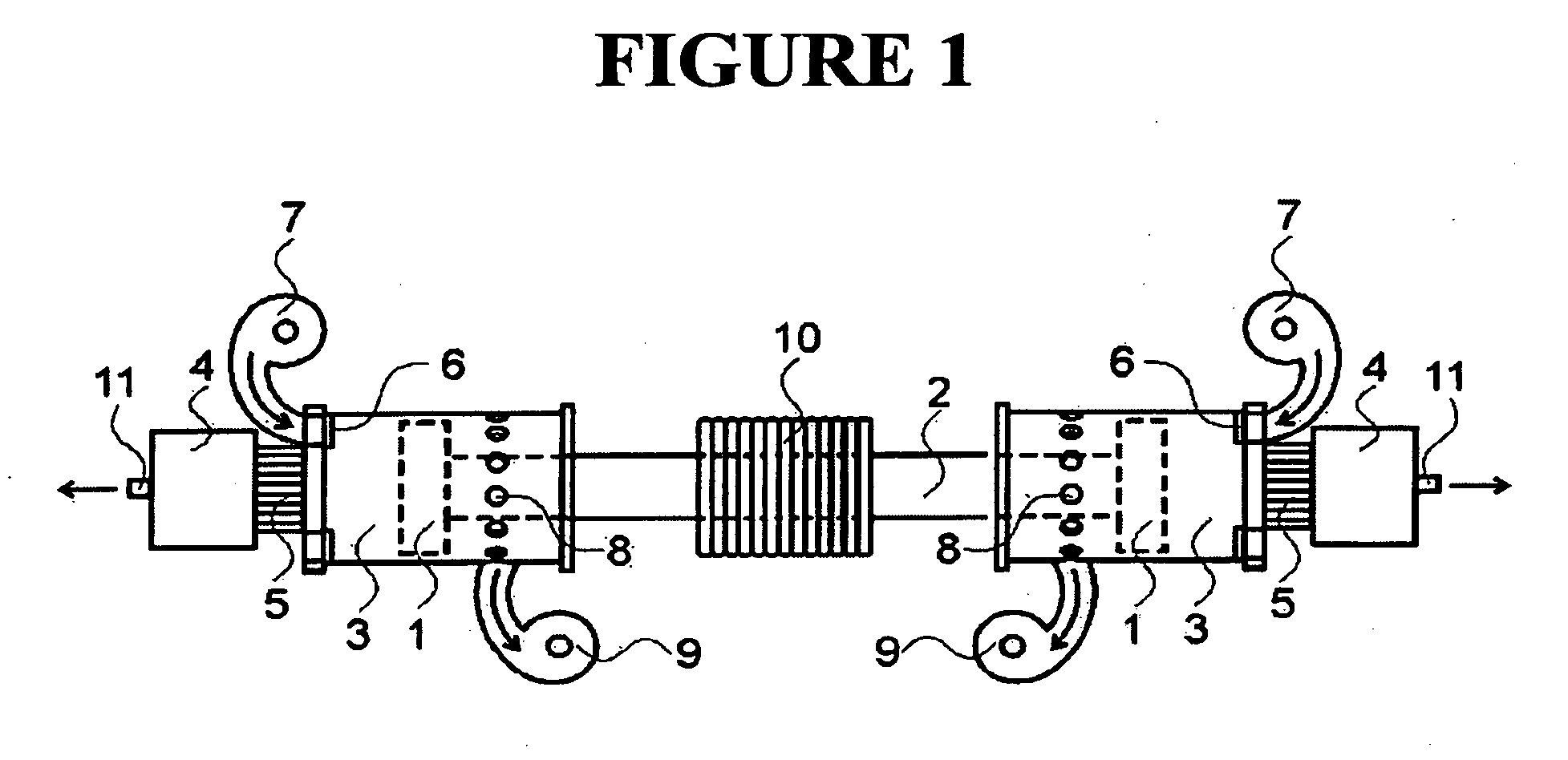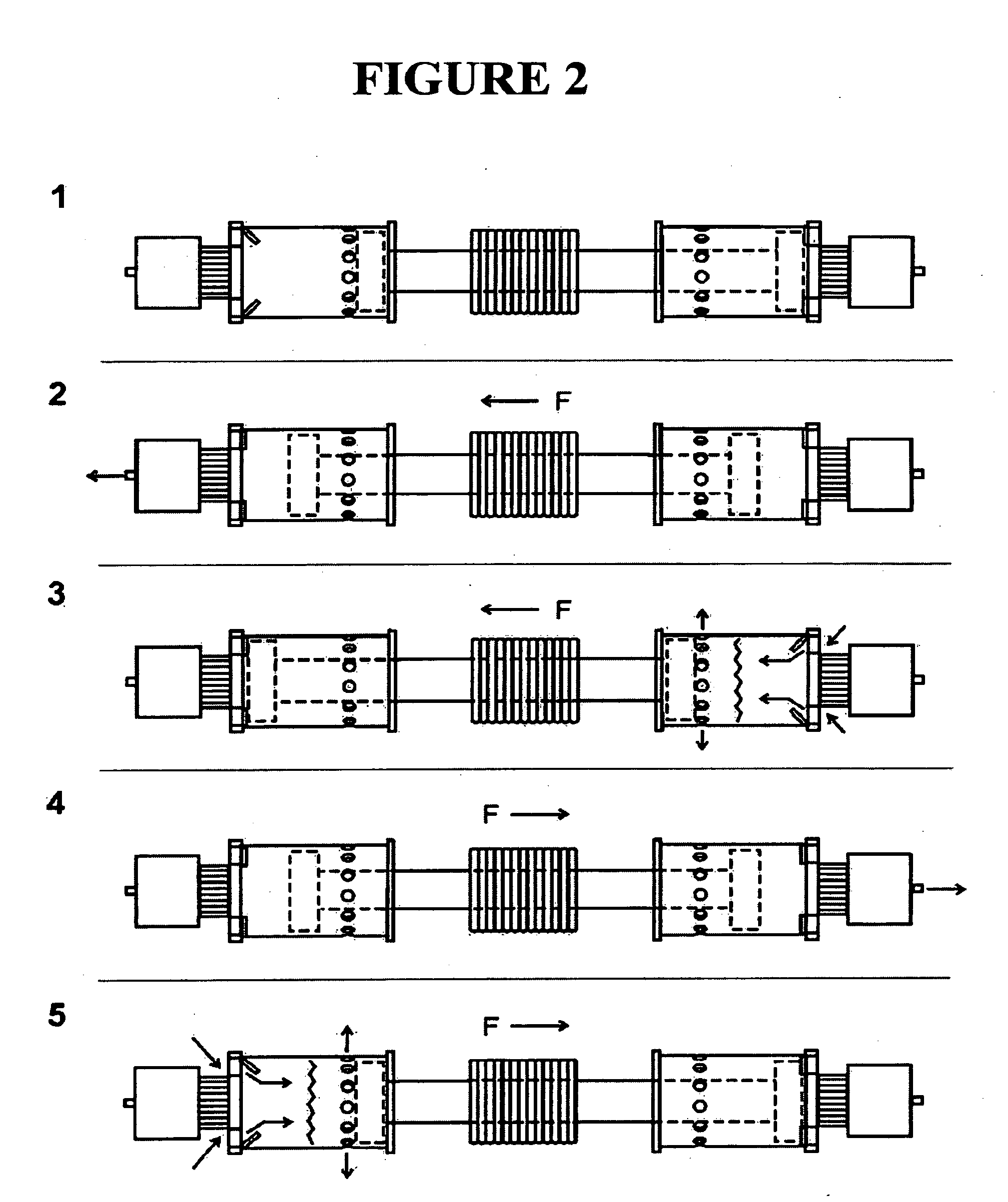Sorption method, device, and system
- Summary
- Abstract
- Description
- Claims
- Application Information
AI Technical Summary
Benefits of technology
Problems solved by technology
Method used
Image
Examples
example 1
[0311]A laboratory bench scale test device utilizes a electrodynamic thruster (FIG. 1-1) two opposed aluminum cylinders (FIG. 1-3), two adsorbent contactors (FIG. 1-4) and a motion controller with Hall effect feedback. The thruster produces a 2 cm amplitude 10 cycle / second stroke. Pressure sensors located in cylinders indicate the pressure develops at each point in the cycle. The contactors (FIG. 1-4) contain about 30 mesh calcium exchanged zeolite (ZeoChem) spherical beads. Teflon™ pistons (31 mm diameter) are affixed to opposing ends of the thruster rod. Oxygen production is recorded for various cycle rates and amplitudes. Power consumption is computed as V×I.
example 2
[0312]The sorptive device may be configured to produce a high pressure product such as may be needed for coal gasification, metal cutting, or aquaculture applications. In this case, a first cylinder and piston is used to alternately adsorb and desorb a fluid component. A second piston and cylinder, having a much smaller cross section is used to compress the product or the raffinate from the first cylinder. The force to drive the second piston is taken, in part, from the expanding desorbing fluid acting on the first piston, which is directly connected in a linear manner to the second piston.
example 3
[0313]FIG. 3 illustrates a combination gas separation unit and booster compressor. Piston-cylinder arrangement 1 delivers alternating high and low pressures to adsorbent contactor 2. Gas purification occurs as described for FIG. 2 cycle. Purified gas is cooled in the heat rejection unit 3 and is delivered to booster compressor 4. Booster compressor 4 uses waste energy from the desorbed gas at 1.
PUM
| Property | Measurement | Unit |
|---|---|---|
| Temperature | aaaaa | aaaaa |
| Time | aaaaa | aaaaa |
| Volume | aaaaa | aaaaa |
Abstract
Description
Claims
Application Information
 Login to View More
Login to View More - R&D
- Intellectual Property
- Life Sciences
- Materials
- Tech Scout
- Unparalleled Data Quality
- Higher Quality Content
- 60% Fewer Hallucinations
Browse by: Latest US Patents, China's latest patents, Technical Efficacy Thesaurus, Application Domain, Technology Topic, Popular Technical Reports.
© 2025 PatSnap. All rights reserved.Legal|Privacy policy|Modern Slavery Act Transparency Statement|Sitemap|About US| Contact US: help@patsnap.com



